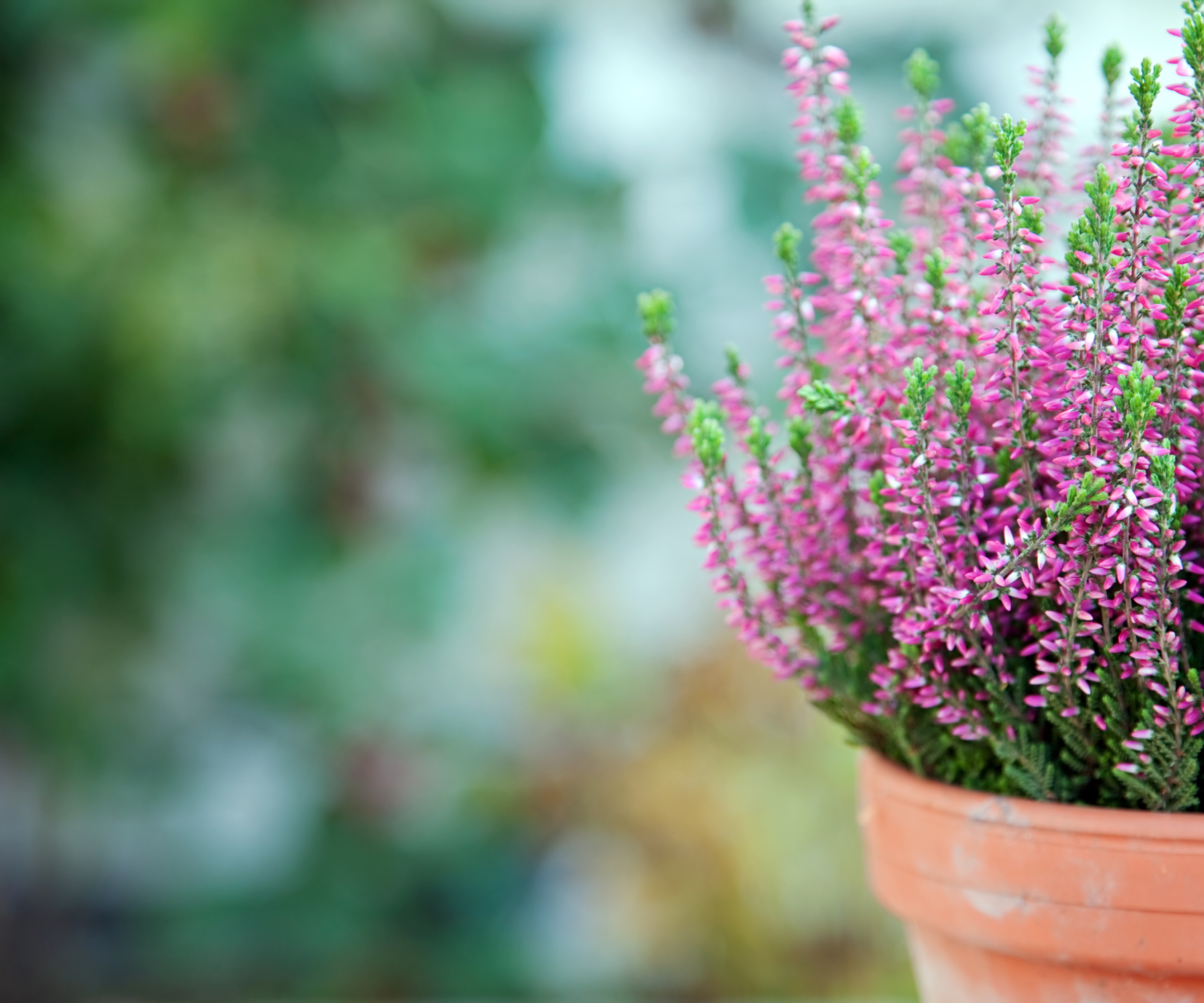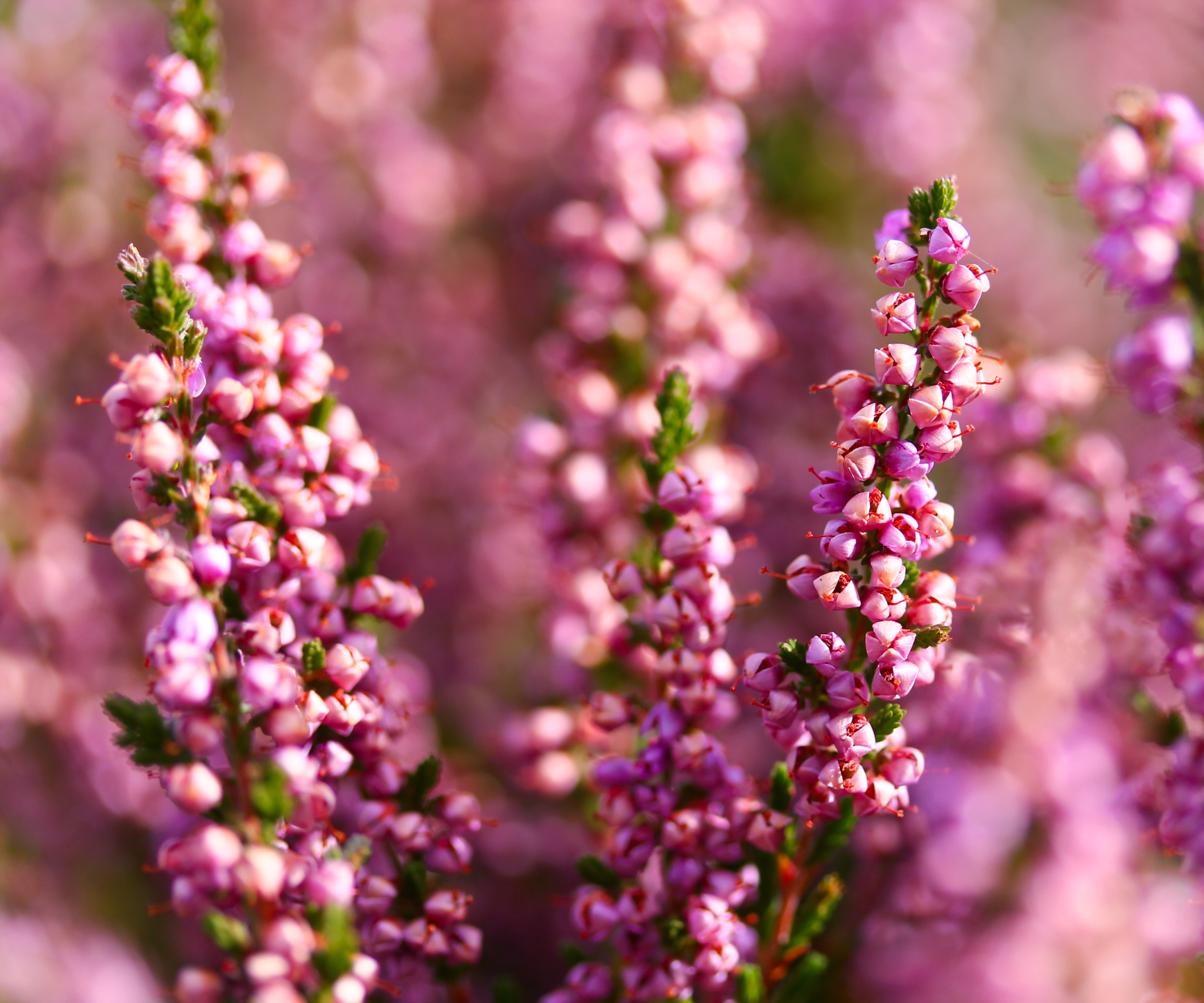How to grow and care for winter heather – brighten your plot with these pretty plants
Discover how to grow Erica carnea and add these colorful, super hardy shrubs to your flower beds, borders and containers


- The two main types of winter heather
- Where to plant winter heather
- When and how to plant winter heather
- How do you take care of winter heather?
- Growing winter heather in pots
- What to plant with winter heather
- How to make more winter heaths
- Common problems with winter heather
- Where to buy winter heather
- FAQs
Evergreen foliage and pretty, long-lasting flowers make winter heather – otherwise known as winter heath or Erica carnea – a must-have for the cold season.
If you're looking for instant winter garden ideas, they're readily available in garden centers and are the perfect plant to enhance tired bedding displays or perk up a patio as part of a container display. The blooms are made up of dainty little bells that line the stems during winter, often for many months. Opening in purples, pinks and white, they provide food for insects that are out and about on sunny days.
The foliage adds color during the colder months, too, and it’s not just green – those in bronze and amber shades are especially useful as they set off the brightness of small bulbs very well.
The two main types of winter heather

Winter flowering heaths fall into two convenient groups, according to the mature size of the plants.
The vast majority are correctly known as winter heath, Erica carnea. They rarely reach more than 10in (25cm) in height, and 6-8in (15-20cm) is more common, but they may spread widely to make individual plants up to 22in (55cm) across. Many are ideal plants for window boxes, troughs and other small containers and are very effective as ground cover plants. In many varieties, the combination of flowers and colored foliage is very effective.
Varieties of the Darley Dale heath, Erica x darleyensis, make larger plants and some varieties may reach 2ft (60cm) in height, even a little more. They also tend to develop into much more upright shapes, making the two groups ideal planting partners.
Where to plant winter heather
The plant professionals at the Missouri Botanical Garden say that winter heaths are best grown in sandy, acidic, medium moisture, well-drained loams that are enriched with organic matter.
Design expertise in your inbox – from inspiring decorating ideas and beautiful celebrity homes to practical gardening advice and shopping round-ups.
In particular, winter heaths are more tolerant of limey soil than any other heaths and while they will grow poorly in strongly limey conditions, they grow and flower happily in conditions in which other types fade away. The more organic matter in the soil, the more lime they will take. Use a test kit, available from garden centers or online (try Amazon), to test your soil if you are concerned.
If your soil is very limey, it can be made more suitable for winter heaths with the addition of composted pine bark, which is very acidic. Use it also as a mulch.
Plant in full sun for the best flowering, however, they will take a few hours of shade each day.
When and how to plant winter heather

Winter heaths can be bought in the fall and winter for temporary displays, especially in winter containers. They can then be moved to a permanent site in the garden in spring.
Plant winter heaths 9-12in (23-30cm) apart to grow into an interlocking carpet of evergreen foliage. Plant the taller Darley Dale heaths individually as specimens.
As your winter heaths will be planted more closely together in the ground than most other shrubs, it pays to amend the soil over the whole planting area, not only where you plant each plant.
Fork the area over and spread 2-3in (5-7.5cm) of organic matter, preferably an acid material such as composted pine bark. Use your garden fork to mix it into the soil then firm it well with your feet and you are ready to plant.
How do you take care of winter heather?
'Heathers are low-maintenance plants that need little in the way of hands-on care. However, they do need trimming after flowering to keep them in shape and encourage prolific flowering the following year,' says expert gardening journalist Ruth Hayes, who has a large winter heather plant in her own garden.
'If you don’t get round to pruning them don’t worry, it isn’t the end of the world, but you will see a difference if you do tidy them up. Because my plant is so large I like to use a sharp, clean pair of shears.
'Only remove the spent flower spikes and a couple of inches of green growth beneath. Never cut into the older brown wood as it is unlikely to produce more new shoots afterward, resulting in bare patches around the bush.'
Feeding your heather after pruning isn’t essential, but some balanced fertilizer will give your heather a boost. 'If you can’t see the base of the plant, lightly scatter a little fertilizer over the top and it will be blown or washed down to the roots,' adds Ruth.

Ruth is an expert gardens writer and former gardening editor of Amateur Gardening magazine. She is horticulturally trained, with a qualification from the Royal Horticultural Society.
Her work for Homes and Gardens and Amateur Gardening, the world's oldest weekly gardening publication, involved matching gardening tasks with each season, covering everything from sowing and planting, to pruning, taking cuttings, dealing with pests and diseases and keeping houseplants healthy.
Growing winter heather in pots

Smaller heathers make some of the best plants for winter pots – the scale is just right to be part of a larger scheme. Pick heathers with foliage and flower colors that appeal; a large garden center or specialist nursery will have lots of options.
Some gardeners choose a range of different varieties, but filling a winter planter or window box with plants of cyclamen and one variety of heather can also be very effective.
What to plant with winter heather
There are plenty of planting options if you're looking for the perfect partner for your winter flowering heather. Here are some of our favorites to add some extra color and interest to your winter landscaping:
- Team your heathers with other plants for winter color like cyclamen; or interplant with crocuses, muscari and other dwarf bulbs in complementary colors – bulbs will be available in bud or in flower after Christmas.
- For a dramatic display, heather looks great with dogwood. Cornus alba ‘Sibirica' is neater in growth than most so it won't overwhelm your heather. The slender, pliable, bright-crimson shoots really stand out in winter.
- Hellebores are at their best in the height of winter (typically January and February in the UK and some parts of the US). To pack your beds and borders with purple and pinkish hues try Helleborus hybridus 'Pretty Ellen'.
How to make more winter heaths

Making new, free plants from existing winter heaths is easy, but slow.
Most winter heaths are low and bushy in growth and the twiggy shoots sometimes make roots where they touch the soil, especially if mulched with fine bark. This process can be encouraged by weighing down low shoots with stones to ensure good contact with the soil.
Another approach is to place an inch or two of potting mix – no more – on top of a winter heath plant, right on the crown, so that the base of all the twiggy little branches is buried under soil. Do this as growth begins in spring. The stems will root into the new soil and, when the roots are an inch or two long, the rooted shoots can be snipped off and moved into individual 3in (7.5cm) pots to grow on.
Common problems with winter heather

Winter heaths are among the healthiest plants we can grow. If given the conditions they require, they rarely suffer from pests or diseases.
Rabbits and other creatures may graze on them, so if your yard is troubled by four-footed pests then a fence is always a wise precaution.
Diseases of their roots may be a problem, but usually only when grown in conditions that are too wet.
Some heathers can start dying in the middle – this is a problem with smaller, bushier and more spreading varieties and usually develops during the winter. In the fall, dead leaves from nearby trees collect among the mass of twiggy shoots. They become soaked with rainwater, may be weighed down by snow, and create a wet mass of slowly rotting leaves which soon smothers the heath leaves and then the twiggy stems. The result is a dead area in the middle of the plant.
The cure? Never allow fallen leaves to collect among the branches of your heaths during the winter; simply rake them out with your fingers.
Where to buy winter heather
A huge range of winter heather varieties is available from specialist mail-order nurseries and will be shipped in tubes, 3.5in pots, 4.5in pots or gallon pots. Always choose the smaller sizes, so that the plants’ developing roots can grow out into the local soil. A gallon pot is usually too large for a small heath.
Heaths are also offered at walk-in retail outlets, nurseries and garden centers in their flowering season so you can choose exactly the combination of flower and foliage color that you appreciate.
FAQs
Are winter heaths invasive?
No, winter heaths are not invasive plants and are very rarely a nuisance in the garden as they do not creep aggressively and do not spread by seed. The Spanish heath (Erica lusitanica) is recorded as invasive in some parts of California but is only hardy to USDA Z8, so does not cause a problem in most of the country.
Will deer eat my winter heaths?
Probably not, as heather is generally a deer-resistant plant.
The experts at New Jersey Agricultural Experiment Station, who have studied deer resistance of garden plants and consulted other experts, have compiled a rating system that divides plants into four categories from 'Rarely Damaged' to 'Frequently Severely Damaged'. All heaths are rated in the first group as 'Rarely Damaged', which means that usually they are ignored by deer but may be eaten in winter when other food is scarce.
Heath or heather? Which is right? To be 100% correct, plants in the genus Calluna are heathers, while plants in the genus Erica are heaths. Heathers are dwarf, sun-loving, summer-flowering, evergreens with small flat leaves in pairs. Heaths are mainly dwarf, sun-loving evergreens with small, needle-like leaves in clusters with different types flowering at different times of the year.
Winter-flowering Erica carnea is correctly known as the winter heath, alpine heath, Mediterranean heath or spring heath, but is sometimes referred to as the winter heather. The taller Erica x darleyensis is also usually referred to as a winter heather but is, more correctly, Darley Dale heath.

Graham Rice is a garden writer who has won awards for his work online, and in books and magazines, on both sides of the Atlantic. He is a member of a number of Royal Horticultural Society committees and the recipient of the 2021 Garden Media Guild Lifetime Achievement Award. He gardened in Pennsylvania for 20 years, but has recently returned to his native England.